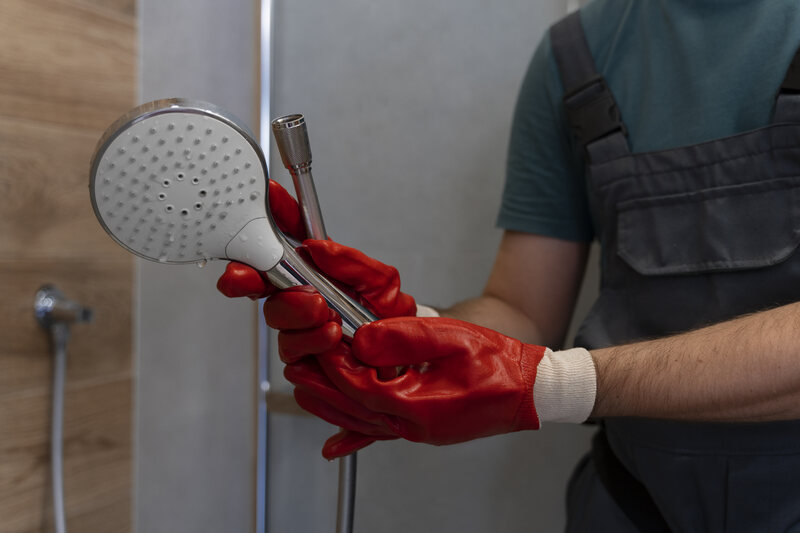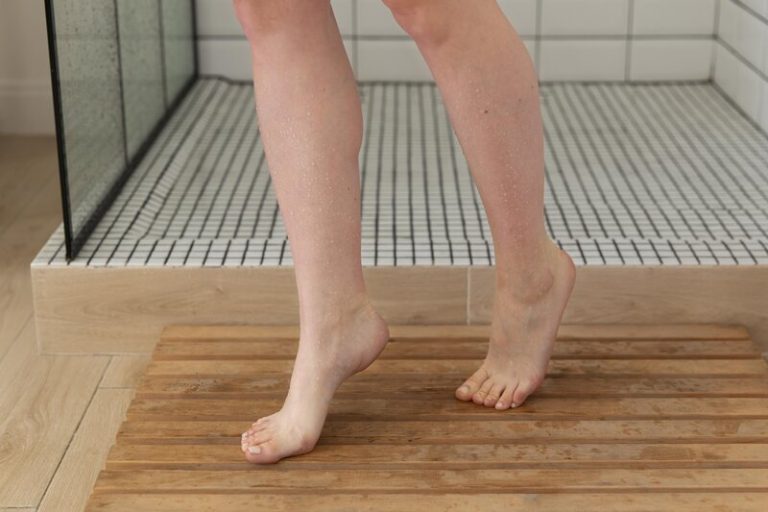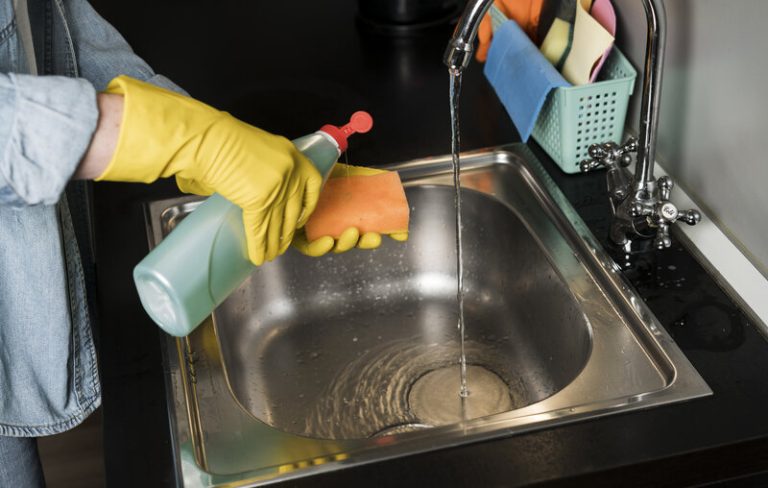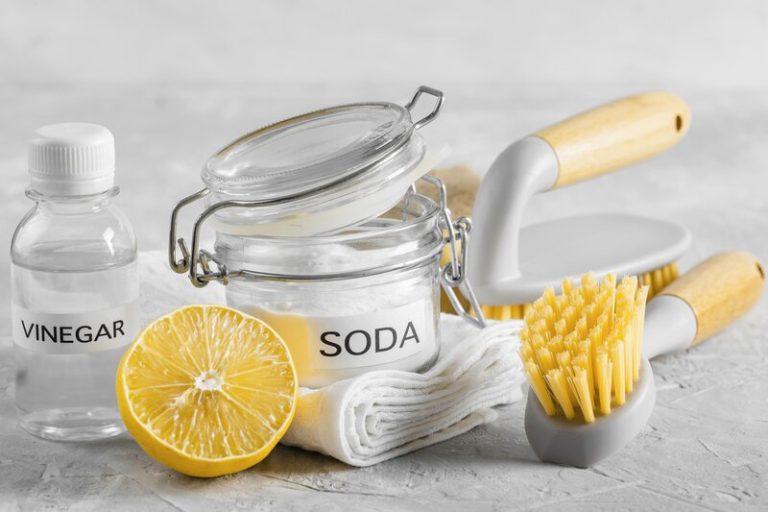Ensuring your shower head stays clean is simpler than you might think and can transform your shower experience. Learning how to clean a shower head effectively is key to removing stubborn mineral buildup that can reduce water pressure and leave your shower less than satisfying.
With just a few basic ingredients, like vinegar and baking soda, you can dissolve these deposits and restore the flow, bringing your shower back to life. This guide breaks down straightforward cleaning tips and maintenance tricks that keep your shower head functioning at its best. By giving your shower head a quick clean now and then, you’ll enjoy a fresher, more powerful shower every day.
Why is it Important to Clean a Shower Head?
Learning how to clean a shower head is essential for optimal water flow, hygiene, and preventing limescale and mold build-up. Regular cleaning clears mineral deposits and debris, ensuring a strong, refreshing shower and reducing potential health risks.
Maintaining your shower head not only keeps your bathroom looking pristine but also conserves water and promotes better household hygiene, ultimately enhancing your overall shower experience.
What Happens if You Don’t Clean Your Shower Head?
Neglecting how to clean a shower head can lead to limescale buildup, reduced water pressure, and health concerns from bacteria growth. Over time, grime and minerals clog the shower head, weakening the water flow and potentially releasing contaminants that may cause skin or respiratory issues.
Avoiding routine maintenance can result in unpleasant odors, stains, and a less enjoyable shower experience, making regular cleaning a must for a safe, hygienic bathroom.
Tools and Materials Needed for Cleaning a Shower Head
When learning how to clean a shower head, having the right tools is essential. These include:
a. What Are the Different Types of Shower Heads?
Shower heads vary widely, impacting both the feel and look of your shower. Handheld types offer flexibility for rinsing and cleaning, while fixed heads deliver consistent water flow. Luxurious rain shower heads mimic rainfall, adding a spa-like touch.
When considering how to clean a shower head, material matters too—chrome resists corrosion, stainless steel needs regular care to avoid spots, and plastic is easy to maintain but less durable over time.
b. What Cleaning Products Should You Use?
Choosing the right products is key in understanding how to clean a shower head effectively. Vinegar dissolves mineral deposits naturally, while baking soda boosts its cleaning power. Lemon juice adds a fresh scent but requires a longer soak time.
For quick results, commercial descalers can help but may be harsher on certain finishes. When selecting a cleaner, consider not only effectiveness but also the safety of your shower head’s material and your health.
How to Clean a Shower Head with Vinegar
Using vinegar is an effective and eco-friendly solution for how to clean a shower head. As for the steps, they are:
a. Remove the Shower Head
To start, carefully remove the shower head from the arm using an adjustable spanner, ensuring a thorough clean. Wrap a towel around the arm to prevent scratches, then turn the shower head counterclockwise to detach. Check the rubber washer for wear and replace if necessary.
Once finished with how to clean a shower head using vinegar, reattach it by reversing these steps, securing it tightly to prevent leaks without over-tightening.
b. Soak the Shower Head in Vinegar
After removal, soak the shower head in white vinegar for at least 30 minutes to dissolve mineral deposits. For stubborn buildup, extend the soaking time up to two hours, allowing the vinegar to break down grime thoroughly. Heating the vinegar beforehand can enhance the effect.
After soaking, scrub with an old toothbrush to remove residue, then rinse in warm water. This approach ensures the shower head is decalcified and blockage-free.
c. Scrub the Shower Head
Following the vinegar soak, scrub the shower head with a soft cloth to lift any remaining buildup. Pay attention to nozzles and areas with heavy mineral deposits for a complete clean. Apply gentle pressure to avoid scratching while ensuring grime removal. For a more thorough cleaning, add mild soap to the cloth.
This approach to how to clean a shower head helps maintain water flow, keeping your shower in optimal condition.
d. Rinse and Reattach the Shower Head
Rinse the shower head thoroughly under hot water to clear any remaining vinegar and debris. Wipe down with a cloth for a spotless finish, ensuring hot water flows freely through the spray holes to remove all residue.
This step completes the process, enhancing water flow and eliminating any vinegar smell. Secure the shower head back onto the arm, aligning it to prevent leaks, and enjoy a refreshed, functional shower.
How to Clean a Shower Head with Baking Soda
For an easy and effective approach on how to clean a shower head, baking soda works wonders by removing limescale, mould, and debris. It’s easy to do this with:
a. Create a Baking Soda Paste
To start cleaning your shower head with baking soda, mix three parts baking soda with one part water, creating a thick paste. This paste easily tackles stubborn mineral deposits and grime.
Apply it directly to the shower head, focusing on areas with visible buildup, and let it sit for 15-20 minutes. Rinse thoroughly with warm water to reveal a refreshed, clean shower head, free of unwanted debris and ready for optimal performance.
b. Apply the Paste to the Shower Head
Once your baking soda paste is prepared, generously apply it to the shower head, especially on limescale and mineral deposit spots. Use an old toothbrush to work the paste into all crevices for a thorough clean. Let it sit for 10-15 minutes or up to 30 minutes for heavy buildup.
This technique for how to clean a shower head efficiently lifts tough residues. Rinse off with warm water to prevent any dull finish from leftover baking soda.
c. Let It Sit and Rinse Off
Allow the baking soda paste to sit on the shower head for 10-15 minutes, breaking down mineral deposits and grime. This waiting period enhances the paste’s effectiveness, making residue easier to rinse away. Use warm water and a soft sponge to clear the surface completely, paying close attention to crevices.
Proper rinsing prevents any powdery residue from affecting the finish and ensures an optimal flow from your freshly cleaned shower head.
Other Methods for Cleaning a Shower Head
For those in hard water areas, regular shower head maintenance is a must. How to clean a shower head isn’t limited to vinegar or baking soda; a toothbrush with dish soap or a specialized cleaner also works wonders. Here’s the full explanation:
a. Using a Toothbrush and Dish Soap
An old toothbrush and dish soap offer a practical answer to how to clean a shower head with a hands-on approach. Begin by dipping the toothbrush into dish soap and scrubbing the shower head, focusing on the nozzles where limescale collects. Work in circular motions to dislodge grime, paying extra attention to rubber gaskets.
Rinse thoroughly with warm water to remove all residue, ensuring your shower head is sparkling clean and ready for use.
b. Using a Shower Head Cleaner Product
For a hassle-free solution on how to clean a shower head, try a commercial shower head cleaner. These specialized products are formulated to break down tough limescale and mineral buildup, making cleaning quick and easy. Simply apply the cleaner, let it sit for the recommended time, and rinse.
This method effectively restores your shower head’s shine, enhances water flow, and helps maintain a refreshing shower experience with minimal effort.
Tips for Maintaining a Clean Shower Head
For how to clean a shower head properly, it is essential to adopt a few practical tips and strategies that promote regular cleaning and effective maintenance. These include:
a. How Often Should You Clean Your Shower Head?
Knowing how to clean a shower head is only part of the process—frequency matters too. Aim to clean your shower head monthly, or more often in hard water areas, to prevent mineral buildup that affects water flow. If multiple people use the shower, increase cleaning frequency.
Consider water hardness, usage, and shower head material to set the ideal routine, ensuring your shower head stays free from clogging limescale and runs efficiently.
b. Preventing Buildup on Your Shower Head
To prevent buildup on your shower head, adopt a few routine practices. Using how to clean a shower head techniques like soaking it in a vinegar-water solution monthly can reduce limescale. Installing a shower filter also helps tackle mineral deposits from hard water.
Scrub gently with a soft brush after soaking, and for added protection, consider a home water softener. Consistent care will keep your shower head free from debris and working well.
Maintaining a clean and fully functioning shower is key to an enjoyable showering experience, and knowing how to clean a shower head effectively can make all the difference. With regular cleaning, you’ll prevent buildup and enjoy consistent water flow.
However, deep cleaning can be time-consuming and tricky, especially with stubborn mineral deposits. For a truly spotless and well-maintained bathroom, consider using TEKA Cleaning’s expert residential cleaning services.
Save time and effort, call TEKA Cleaning at 01223 751 544 for professional, thorough shower head and bathroom cleaning. Let our specialists handle the hard-to-reach areas and mineral deposits, ensuring every part of your bathroom is sparkling clean and hygienic. Trust TEKA Cleaning for an efficient, hassle-free cleaning experience.
Read also:











